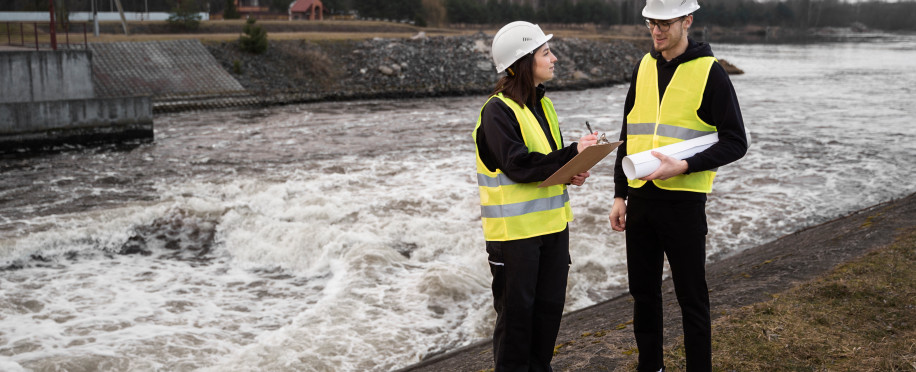Copyright © 2025 lmitac.com All Rights Reserved. Contact - Terms and Conditions - Privacy Policy - Quality Policy - Become an instructor - Vacancies - Sitemap
London Maritime Academy is a trade name for London Premier Groupversion: 2.9.0
London Maritime Academy is a trade name for London Premier Group

Posted on : 4/30/2024, 7:24:52 AM
In the ever-changing world of ocean transport, the search for heightened productivity, a cleaner environment, and performance is becoming the main factor determining the future of the industry. At the core of this transformational flow of motion is a powerful analytical tool, hydrodynamic analysis, that is capable of completely changing the paradigm of ship design and operation.
In essence, hydrodynamic analysis is the scientific field that explores the way fluid substances, mostly water in this case, influence the design of a ship's hulls and other body elements. By conducting sophisticated CFD simulations, naval engineering experts can understand complex flow patterns and dynamics imposed on a vessel while it's floating offshore in the ocean.
The in-depth concise knowledge of a ship's hydrodynamics helps designers identify areas that can be developed inside the structure of the vessels, including reducing the drag and improving speed and propulsion efficiency, and increasing the ship's stability and manoeuvrability. needless to say,
Moreover, these analyses established a key foundation for the creation of new ships and optimizing the ones that are already in use and also for making smart decisions for the retrofitting of the old ships, by conducting an accurate investigation and then switching up integral parts to make the ship's movement more efficient
Performing hydrodynamic analysis is a complicated process that is performed by an engineer with a strong background in hydrostatic physics and geometry coupled with an expertise in naval mechanical techniques and can do complex computations. However, a hydrodynamic analysis is usually conducted through these steps
Geometric Modeling: The first step is to generate a realistic 3D image of the ship's hull and those other important parts, for example, the propeller and the rudder.
Mesh Generation: The model is next divided into several small, closely linked cells or elements to create a computational grid that can be used for simulating a fluid flow.
Boundary Conditions: The analysts will specify the boundary conditions, including the speed, direction, and properties of the incoming water flow, as well as the external forces acting on the ship.
Computational Fluid Dynamic (CFD) Simulation: Powered by various software, the analysts will perform a series of CFD simulations that will provide numerical solutions to the Navier-Stokes equations to predict the flow patterns as well the sea forces acting on the ship (waves, surface tension, etc)
Data Analysis: The results of the CFD simulations are analyzed to determine areas of high-pressure, low-pressure, and high-velocity flow, which then can be used to improve the ship's design.
Hydrodynamic analysis plays a crucial role in improving ship efficiency in several ways:
Hydrodynamic models eliminate the drag and the level of resistance created by waves, reducing fuel consumption and increasing speed. Through a basic investigation of different parameters, like wave motions and their effects on ship movement, hydrodynamic analysis creates a potential to come up with a result-driven solution
hydrodynamic analysis deals, engineers can study and adjust hull designs, propeller shapes, edge curvature, and appendages to eliminate vibrations, raise stability, and enhance maneuverability in linear and circular motions.
Consequently, these optimizations enhance the ship’s turbine engine performance while decreasing its oil and energy consumption.

The hydrodynamic analysis will help improve vessel modelling to increase capacity, but also to keep the vessel stable and safe for cargo loads.
Designers can come up with optimal and effective ship configuration to take advantage of fluid-induced forces acting on the structures of the ship based on the understanding of the impact of the movement of the ship on different types of cargo.
With the emphasis on sustainable ship design in the marine world, hydrodynamic analysis emerges as the most sustainable method. When hydrodynamic analysis methods are applied, it allows engineers to streamline operations in a way that requires less fuel, and creates reduced exhaustion time, and bearing less consequences on fish, animals, or any other organism at sea.
By understanding the liquid flow patterns and forces acting on the ship, engineers can develop better predictive maintenance strategies, helping to identify potential issues before they become critical problems.
With maritime business developing rapidly more and more employers demand professionals that can be involved in the performance of hydrodynamic analysis and application of these results. In a wide world where courses are the hub of a new generation of naval architects, marine engineers, and industry leaders who have the competence to fully explore the concepts and approaches of this breakthrough technology.
Through maritime training courses in Dubai, you’ll learn about fluid dynamics, CFD simulations, and new software techniques, these courses give tomorrow's innovators a solid base of components and tools to enable the development of new and ever more efficient, environment-friendly ships.
In summary, we can say that hydrodynamic analysis is becoming more and more prevalent, it is multi-dimensional, promising to usher in a new era of enhanced efficiency, reduced emissions, and improved safety across the maritime industry.